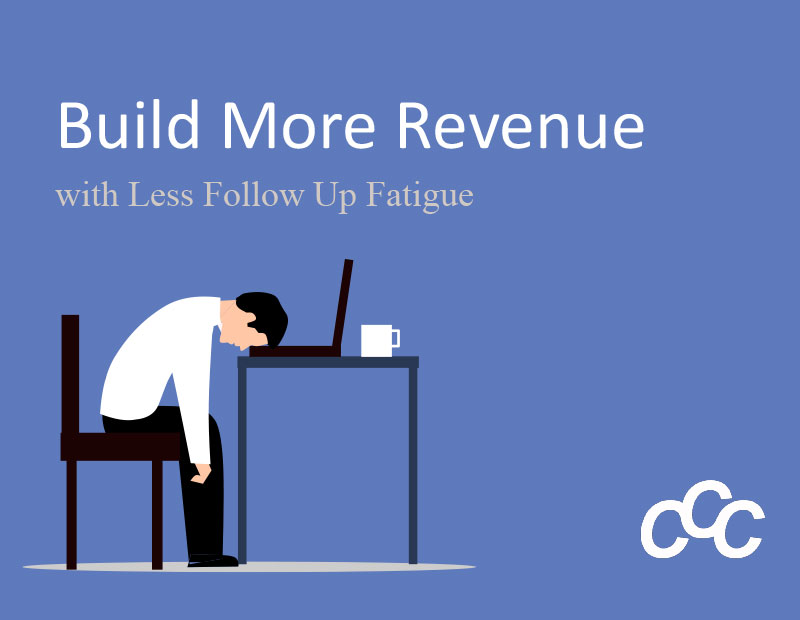More Sales, Less Risk – Sounds like a TV commercial!
Roberts Public Relations found itself in a tough spot: sales had declined for two years straight. Robert, the owner, and two sales reps juggled marketing and sales tasks, without formal processes.
The Struggles They Faced
The firm’s sales challenges were painful. Robert, the owner, sold by working the crowd and meeting the right people. His sales team did the same. It was too “loosey goosey,” they admitted.
Without defined steps and follow-up routines, leads fell through the cracks. Robert needed to pinpoint what was and wasn’t working.
Robert also learned an earlier lesson. A sales rep quit, taking prospect and client data. There was no back up. Robert knew he had to change.
Time to Change
Robert and his employees agreed to:
- Keep prospect and client info in one place.
- Standardize follow up steps and track prospects.
- Rank prospects and allocate time based on ranking.
- Automate some marketing and sales tasks to free up more time for key prospects.
They asked 2 advisors to help crystalize Roberts’ “ideal client” and set marketing and sales steps. The advisors also recommended the same CRM as part of the solution.
The Big Step
The CRM vendor set up the CRM to support their marketing and sales steps including:
- Ranking prospects based on their “ideal client” criteria.
- Reaching out to A&B prospects more frequently than to the “Cs.”
- Segmenting clients and prospects by 1 or more of 4 company service types.
- Automating outreach by service type and internal sales rep reminders.
- Tracking prospects over 5 sales stages.
- Sales meetings twice monthly.
The team and CRM were ready for action.
CRM Impact
Impact during the first 6 months included:
- Prospect Ranking – Sales reps reached A&B prospects 3 times more frequently than other prospects.
- Segmenting – Personalized messaging by service type increased email open and click rates by 35%.
- Automating Outreach and Reminders – Saved 6 hours per week per salesperson as repetitive, manual tasks were reduced by 50%.
- Tracking Prospects – Meetings were shorter as data was visible to the team every day so they focused on the exceptions.
Plus, collecting customer data helped sharpen sales’ pitches to truly meet client needs, improving conversion rates.
Results and Benefits
By month 4, sales reversed its downward trend for the 1st time in 24 months. By month 6, the team had produced 3 months of increased sales. 18 months later, the results are in:
- Sales from new clients have increased 40% in the last 12 months.
- Sales from existing clients have increased by 20% in the last 12 months.
- Sales reps stopped chasing leads and started following smart, data-driven steps.
- Customer service improved as everyone focused on existing relationships.
- Robert’s data was backed up and his employees could not export it from the CRM.
The CRM delivered an amazing return on investment: In fact, the ROI was 8 to 1!
Want to Sell More and Reduce Risk





